Of course, image quality is the main criterion for evaluating any projector or TV. In turn, it directly depends on brightness, resolution, contrast and color gamut. In a projector, brightness and color gamut mainly depend on the type of light source used.
The brightness compensates for the influence of ambient light, which makes the image colors dull and faded. Accordingly, the bright projector provides a high-quality image even in diffused daylight without additional dimming.
The color gamut defines the range of colors reproduced. For reference, the display industry uses 3 gamut standards, including Rec.709 for most monitors, DCI-P3 or Hollywood gamut in digital film technology, and Rec.2020 / BT.2020 in 4K digital display for ultra-high-definition TV.
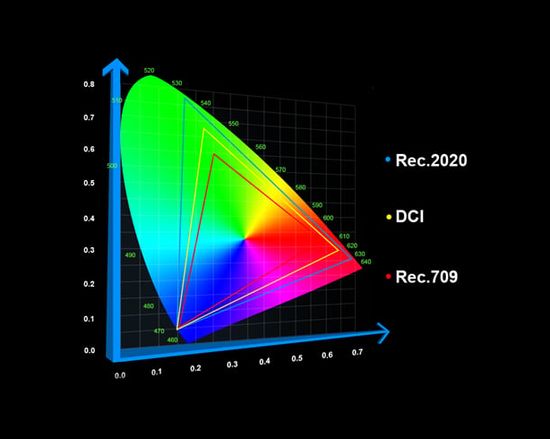
In modern projectors, developers are using lamps less and less, preferring Solid State Light Source (SSL) – based light engines. In turn, they are divided into several sub-types, including:
– LED – inexpensive, but low-power with a narrow color gamut.
Basically, they are used in inexpensive portable models;
– light generators with ALPD technology.
ALPD light engine
ALPD is an acronym from Advanced Laser Phosphor Display. It was developed and presented in 2007 by the Chinese company Appotronics Corp. In less than 20 years, it has already developed 5 gen, the latest of which ADLP 5.0 was presented in last year’s Dangbei X5 Ultra.
Today, companies mainly use two of its versions:
– ALPD 3.0 – based Laser Phosphor.
They are relatively inexpensive and cover 85% – 90% in the DCI-P3 color space;
– ALPD 4.0 – based RGB triple laser.
These models are more expensive and cover 110% in BT.2020 standard, but playback may be accompanied by speckles due to interference of laser beams. Of course, companies are solving this problem. For example, Xiaomi Formovie Theater works almost without speckles.
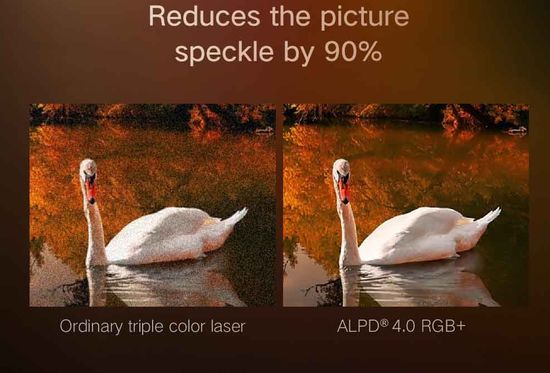
But, of course, speckle-free light generators are more expensive.
The Laser/LED hybrid light engine is the next step in the evolution. As the name suggests, these models use LEDs and lasers. For reference, a laser diode is a diode with an optical resonator. It’s more expensive, but more powerful due to coherent radiation. In addition, narrow beams significantly improve color accuracy.
The laser/LED models are cheaper and demonstrate unprecedented DeltaE < 1 color accuracy even 'out of the box'. For comparison, DeltaE < 3 is considered good even after calibration.
The segment of projectors with hybrid light sources has already begun to form. Some companies position this technology as ALPD 5.0 version. In last year the market was replenished with mid-focal Home Theater 4K NexiGo TriVision Ultra and XGIMI Horizon S Max with a hybrid light generator. The launch price of both models was $ 1,900, which is significantly cheaper than analogs in this class, the price of which starts at $ 2,300.
TriVision Ultra vs Horizon S Max Specs
Both projectors support Full HD 3D and cover up to 110% BT.2020 color space with ΔE < 1 color accuracy 'out of the box'.
The models are made in a parallelepiped form factor. The carrying handle makes the NexiGo TriVision Ultra portable.
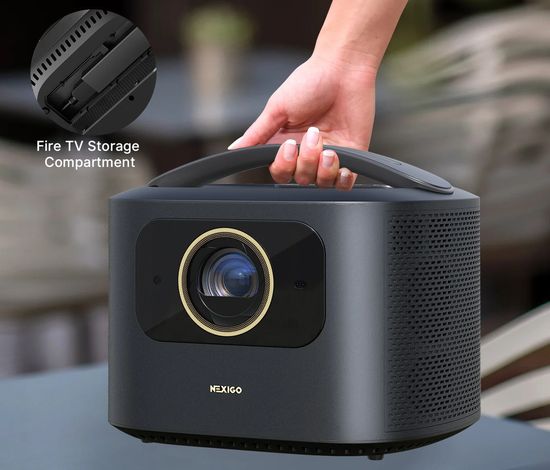
But the stand of Horizon provides easy and convenient projection angle adjusting due to 360° horizontal and 135° vertical rotation.

Horizon is slightly smaller and lighter (Horizon vs NexiGo):
– 27 x 23 x 17 cm vs 28 x 24 x 23 cm / 11.06 x 9.33 x 9.13 inches;
– 10.6 lbs / 4.8 kg vs 11.46 lbs / 5.2 kg.
According to the specs, XGIMI Horizon is brighter (3,100 ISO Lumens vs 2,600 ANSI Lumens). But this aspect has a nuance. Usually companies indicate the max value of the brightest mode, for example, for Vivid. Unfortunately, playback with max brightness in DLP projectors is usually accompanied by a shift in the color balance to green or red. Perhaps this is an acceptable compromise when viewing in a room with fairly bright ambient light. But in situations where brightness is less important, most people prefer picture modes with more accurate color rendering, the brightness of which is usually significantly lower.
NexiGo TriVision Ultra is inferior in contrast, offering a FOFO (full-on, full-off) contrast ratio of only from 800:1 to ~1,500:1 vs 2,000:1 in Horizon.
But NexiGo can rightly be positioned as a gaming projector. Its input lag varies from ~ 4.2ms to 8ms for 1080p@240Hz with ALLM and 17.6ms for 4K@60Hz.
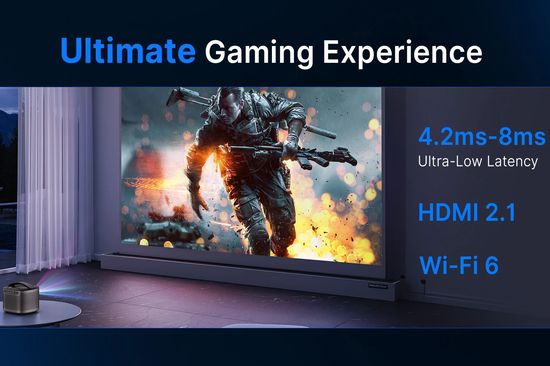
However, NexiGo is also great for gaming, providing only 18 ms with game mode, which is enough for smooth gameplay even in demanding games.
Key Features
Both projectors support Dolby Vision, HDR10 and HLG. But NexiGo’s list of HDR formats additionally includes HDR10+.
NexiGo uses a fairly powerful audio system with 2x 15W internal speakers and Dolby Audio and DTS Virtual: X support.
But XGIMI has paid more attention to music lovers. Horizon is equipped with 2x 12W Harman Kardon professional speakers with Dolby Audio, Dolby Digital, Dolby Digital Plus, DTS-HD and DTS Virtual:X support. Despite its compact form factor, the audio system has 676 cc volume and 71.4 cm² diaphragm area.
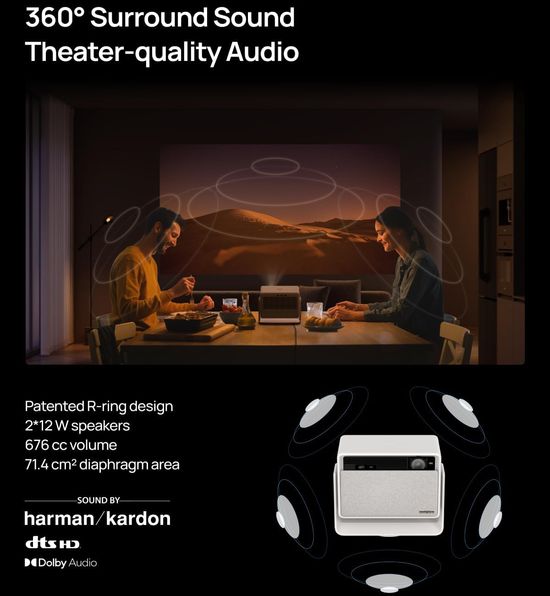
Honestly, most people can quite save money and do without buying an external soundbar.
XGIMI offers ISA 5.0 (Intelligent Screen Adaptation) system with 3D ToF sensors, which is considered the best in the industry.
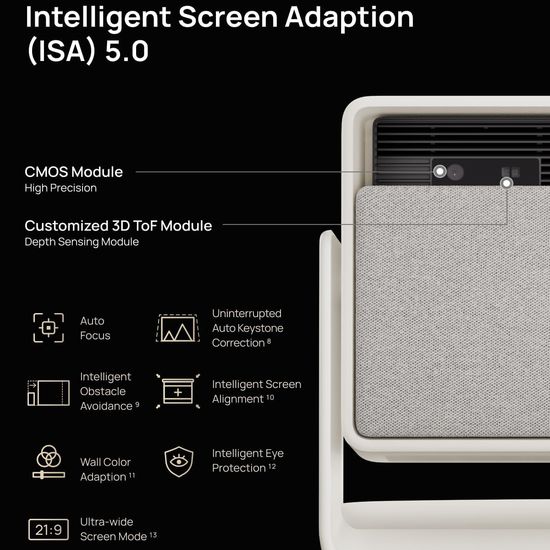
However, Grab & Go smart screen adaption (Smart AI Screen Adaption Technology) in NexiGo also provides Auto Focus, Auto Keystone Correction, Intelligent Obstacle Avoidance, Auto Screen Fit, Intelligent Eye Protection and Adaptive Brightness.
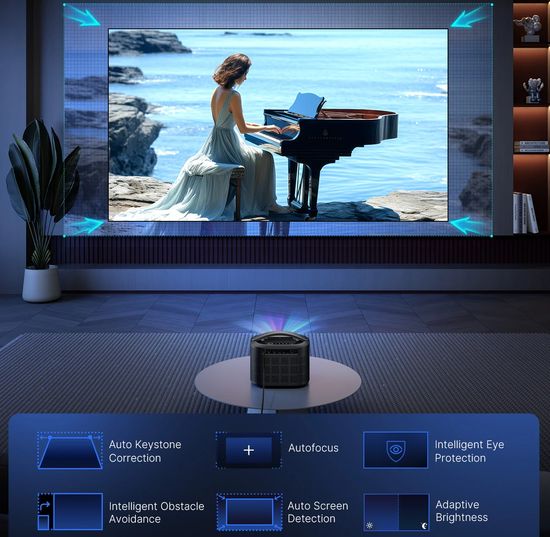
In fact, their functionality is almost identical.
24p Movie Mode in TriVision Ultra is designed to play movies at a native 24Hz frame rate.
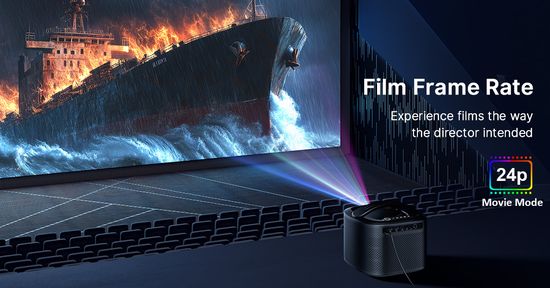
Horizon S Max is certified by SGS, including Low Blue Light, Low Speckle A+ and Low Color Breakup Ratio A+ certifications.
For transmitting content, TriVision Ultra uses screen mirroring, including Miracast, Airplay and Windows. In addition, it has a hidden Fire TV storage slot.
XGIMI model runs on Android TV 11.0 and uses DLNA/GoogleCast for mirroring display.
Conclusion
Unfortunately, the comparison results are controversial. Each of the models has minor pros:
– NexiGo offers ‘gaming’ input lag (~ 4.2ms for 1080p@240Hz), support for additional HDR10+ format, 24p Movie Mode and a convenient carrying handle;
– Horizon is a bit more contrasty and brighter, slightly smaller and lighter, has a two-plane rotating stand (360° H and 135° V), Harman Kardon professional speakers and SGS certification.
Today, the price of TriVision Ultra on the NexiGo website is $ 1,500. Horizon S Max is already available from some sellers for $ 1,600. Given the almost identical prices, specs and functionality, the choice depends on secondary factors, including discount promotions, service and individual attitude to brands.
For reference, Chinese XGIMI has been successfully competing in the smart projector segment since 2012. The history of American NexiGo starts in 2019. Over the few years, the company has created several great models that have received many awards, including Innovation awards (CES 2022 and CES 2024), Red dot winner (2023 and 2024) and iF Design awards (2023 and 2024).
This video offers unboxing of NexiGo TriVision Ultra.
